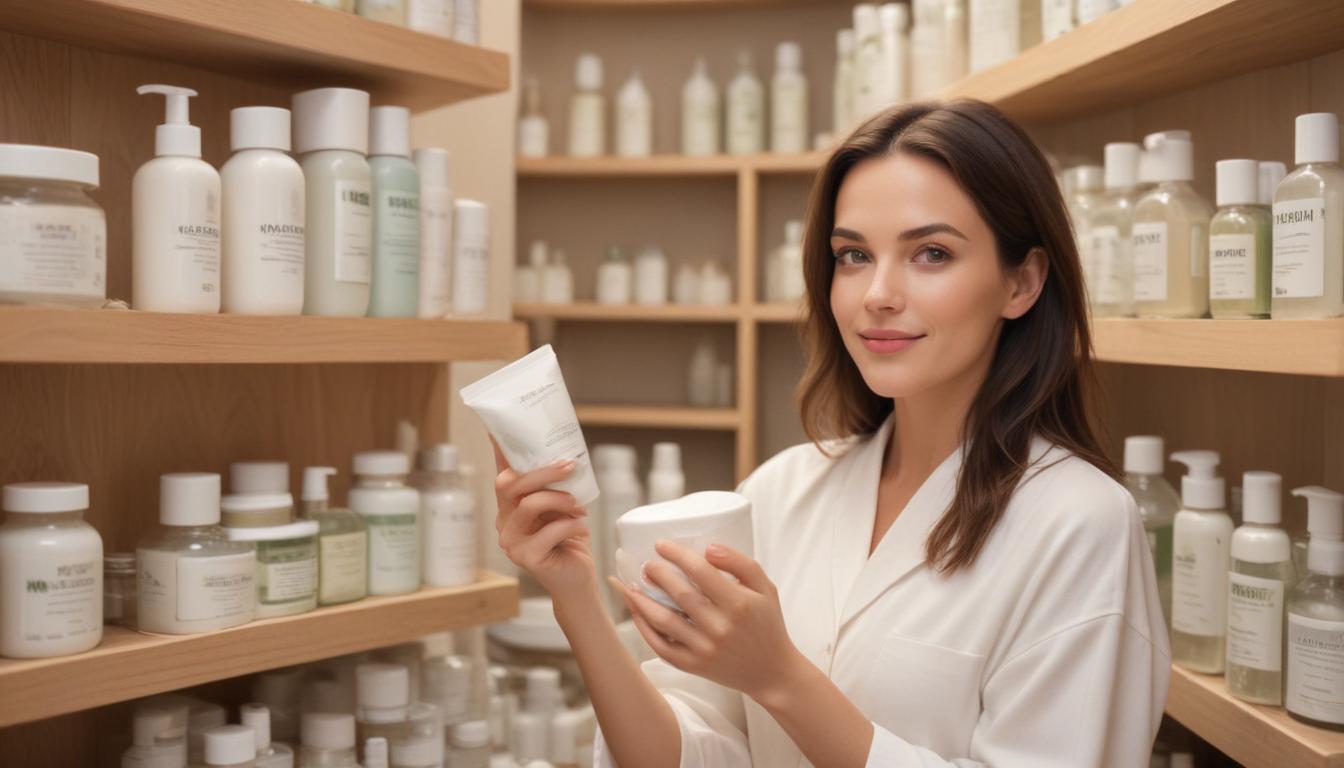Now Reading: Your Step-by-Step Guide to Healthy Skin
- 01
Your Step-by-Step Guide to Healthy Skin
Your Step-by-Step Guide to Healthy Skin

Healthy Skin Care Routine A Step-by-Step Guide
Walking down the skincare aisle or scrolling through social media can feel like navigating a maze. With countless products promising miracle results and conflicting advice at every turn, it is easy to feel overwhelmed and confused. You might have a cabinet full of half-used bottles, uncertain of what to apply or when, and your skin is still not where you want it to be. The frustration is real, but achieving healthy, radiant skin does not have to be complicated or expensive.
The secret is not in a 12-step routine packed with trendy ingredients. Instead, it is about understanding the fundamentals and building a consistent, effective framework that works for your unique skin. This guide will cut through the noise and provide you with a clear, step-by-step approach. We will focus on the non-negotiable pillars of skincare and then show you how to thoughtfully add treatments to address your specific concerns. Prepare to build a routine that finally makes sense and delivers the results you have been looking for.
The Unshakable Foundation Your Core Skincare Steps
Before you even think about special serums or masks, you need to master the three core steps that form the foundation of every single effective skincare routine. These are the non-negotiables for all skin types, ages, and genders. If you do nothing else, doing these three things consistently will dramatically improve your skin’s health, texture, and appearance. Think of this as the essential framework upon which everything else is built.
Without a solid foundation, any extra products you add will be less effective. A clean, moisturized, and protected canvas is necessary for targeted treatments to work their magic. Committing to these steps every day will help balance your skin, strengthen its protective barrier, and shield it from the environmental damage that accelerates aging.
Step 1 Cleanse The Right Way
Cleansing is the critical first step that washes away the day’s grime, including dirt, excess oil, makeup, and environmental pollutants. Performing this step properly ensures your skin is fresh and ready to absorb the products that follow. Skipping it or using a harsh, stripping cleanser can lead to clogged pores, breakouts, and a compromised skin barrier, which results in sensitivity and irritation. The goal is to clean your skin thoroughly without stripping it of its essential natural oils.
For a perfect cleanse, use lukewarm water, as hot water can be overly drying. Use your fingertips to gently massage a small amount of a mild cleanser into your skin for about 60 seconds, making sure to cover all areas. In the evening, especially if you wear makeup or heavy sunscreen, consider a double cleanse. Start with an oil-based cleanser to dissolve makeup and SPF, then follow with your regular water-based cleanser. Afterward, gently pat your skin dry with a soft towel, never rub.

Step 2 Moisturize for Hydration and Protection
Moisturizing is vital for every skin type, even oily skin. A good moisturizer does two critical things it infuses your skin with hydration and it helps lock that moisture in by supporting your skin’s natural protective barrier. This barrier is your skin’s first line of defense against external irritants and bacteria. When it is healthy and strong, your skin looks plump, smooth, and feels comfortable. A damaged barrier, however, leads to dryness, redness, and sensitivity.
You should apply your moisturizer morning and night, immediately after cleansing while your skin is still slightly damp. This helps to trap the water on the surface of your skin, boosting hydration. The type of moisturizer you choose can be tailored to your skin type. If you have oily or acne-prone skin, a lightweight gel or lotion may be best. If you have dry skin, a thicker cream will provide more nourishment. Do not forget to bring the product down to your neck and chest.
Step 3 Protect with Sunscreen Every Single Day
If you only commit to one skincare step, let this be it. Sunscreen is the most powerful anti-aging and skin health product you can use. It protects your skin from harmful ultraviolet (UV) rays, which are the primary cause of premature aging, including wrinkles, fine lines, and dark spots, as well as skin cancer. This protection is not just for sunny beach days. UVA rays, which are responsible for aging, can penetrate through clouds and windows, meaning your skin is exposed even on overcast days or when you are indoors.
Apply a broad-spectrum sunscreen with an SPF of 30 or higher as the very last step of your morning skincare routine, after your moisturizer. Be generous with your application to ensure you get the full level of stated protection, and remember to cover all exposed skin, including your face, neck, chest, and the backs of your hands. For continuous protection, especially if you are outdoors, sweating, or swimming, you should reapply your sunscreen every two hours.
Elevating Your Routine Adding Targeted Treatments
Once you have consistently practiced your foundational routine for a few weeks, you can begin to incorporate targeted treatments. This is where you can customize your routine to address specific skin concerns, such as acne, hyperpigmentation, fine lines, or dullness. These products contain potent active ingredients designed to create noticeable change in your skin. The key is to introduce new products one at a time and start slowly to allow your skin to adjust.
Adding a treatment step allows you to move from simply maintaining your skin’s health to actively improving it. For example, if you struggle with uneven skin tone, a brightening serum can make a world of difference. If hydration is your main goal, adding a specific hydrating ingredient can make your skin feel more plump and dewy. This personalized approach is what takes your skincare from basic to exceptional.
Introducing Serums for Specific Concerns
Serums are lightweight, fast-absorbing liquids that deliver a high concentration of active ingredients deep into the skin. They are designed to be applied after cleansing but before moisturizing to tackle specific issues. For example, a serum with Vitamin C is excellent for brightening the skin and providing antioxidant protection in the morning. A serum containing hyaluronic acid can provide an intense boost of hydration for all skin types.
For anti-aging and texture concerns, retinol is a powerhouse ingredient best used in your nighttime routine, as it can increase sun sensitivity. When introducing any active serum, especially one with retinol or acids, start by using it just two or three times a week. Pay close attention to how your skin responds. If you experience any persistent redness or irritation, reduce the frequency. Listening to your skin is the most important part of adding powerful treatments.
The Role of Exfoliation
Exfoliation is the process of removing dead cells from the surface of your skin. This process helps to prevent clogged pores, brightens your complexion, smooths texture, and allows your other skincare products to penetrate more effectively. There are two main types of exfoliation physical and chemical. Physical exfoliants use small particles to manually scrub away dead skin, but they can sometimes be too abrasive.
Chemical exfoliants use acids, like Alpha Hydroxy Acids (AHAs) or Beta Hydroxy Acids (BHAs), to gently dissolve the bonds holding dead skin cells together. AHAs (like glycolic acid) are great for surface texture and brightness, while BHAs (like salicylic acid) are oil-soluble and can get deeper into pores, making them ideal for acne-prone skin. It is crucial not to do not over-exfoliate, as this can severely damage your skin barrier. Start by exfoliating just one or two times per week in the evening, after cleansing, and always follow up with your moisturizer.


































